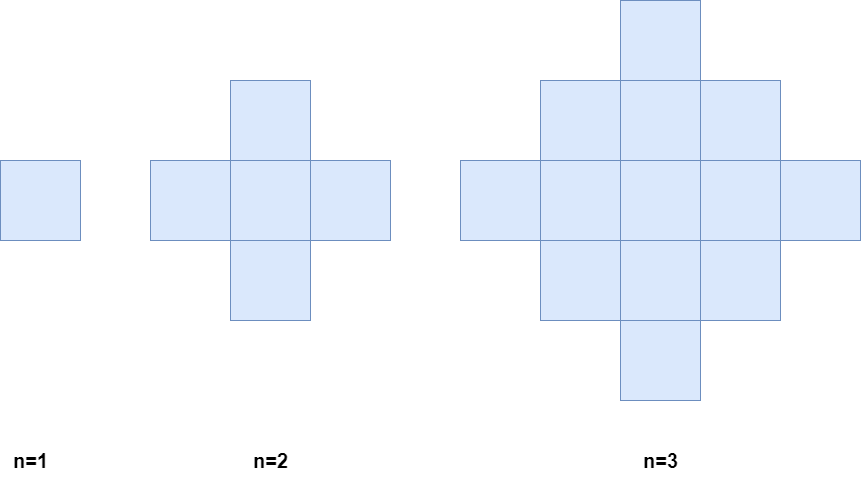There exists an infinitely large two-dimensional grid of uncolored unit cells. You are given a positive integer n, indicating that you must do the following routine for n minutes:
- At the first minute, color any arbitrary unit cell blue.
- Every minute thereafter, color blue every uncolored cell that touches a blue cell.
Below is a pictorial representation of the state of the grid after minutes 1, 2, and 3.
Return the number of colored cells at the end of n minutes.
Example 1:
Input: n = 1 Output: 1 Explanation: After 1 minute, there is only 1 blue cell, so we return 1.
Example 2:
Input: n = 2 Output: 5 Explanation: After 2 minutes, there are 4 colored cells on the boundary and 1 in the center, so we return 5.
Constraints:
1 <= n <= 105
Solution 1: Mathematics
We find that after the $n$th minute, there are a total of
Time complexity
class Solution:
def coloredCells(self, n: int) -> int:
return 2 * n * (n - 1) + 1class Solution {
public long coloredCells(int n) {
return 2L * n * (n - 1) + 1;
}
}class Solution {
public:
long long coloredCells(int n) {
return 2LL * n * (n - 1) + 1;
}
};func coloredCells(n int) int64 {
return int64(2*n*(n-1) + 1)
}function coloredCells(n: number): number {
return 2 * n * (n - 1) + 1;
}
